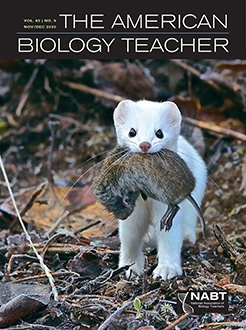Understanding the causes and consequences of variation among populations is fundamental for understanding the process of evolution via natural selection. To support students in noticing, questioning, and investigating variation in wild populations, we describe an introductory investigation that used digitized museum plant specimens as the primary focus. The activity illustrates how digitized museum collections can be used to introduce natural phenomena into the classroom, even without physical access to a museum. Through measuring plant specimens and examining patterns in data, students had opportunities to discuss how to obtain accurate measurements, handle noisy data, and request data that would be helpful for further investigation of the patterns they observed. In our example, we focused on one flowering plant, the royal penstemon (Penstemon speciosus), which varies in size across environmental gradients: larger plants are found at lower elevations, and smaller ones on the highest peaks, a pattern commonly observed in nature. Overall, this lesson led students to observe this pattern and wonder about the environmental constraints affecting phenotypes. We provide examples of the kinds of activities that could follow our lesson to provide students with opportunities to connect their ideas to intraspecific variation, a key component for understanding evolutionary processes.
How to translate text using browser tools
5 May 2021
Using Digitized Museum Collections to Investigate Population Variation in Plants
Candice Guy-Gaytán,
Cynthia Scholl,
Elizabeth Leger
ACCESS THE FULL ARTICLE
It is not available for individual sale.
This article is only available to subscribers.
It is not available for individual sale.
It is not available for individual sale.

The American Biology Teacher
Vol. 83 • No. 4
April 2021
Vol. 83 • No. 4
April 2021
collections
intraspecific variation
NATURAL SELECTION
population variation
science practices




